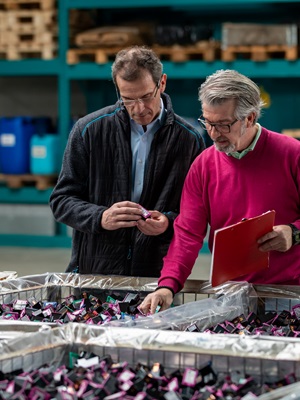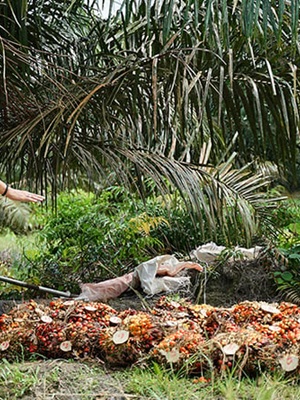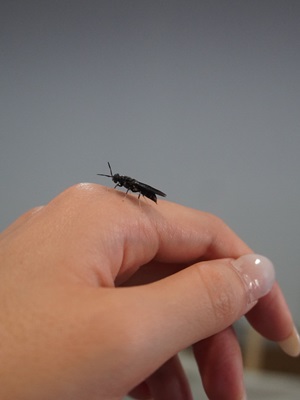Have you ever looked at wild plants and wondered, "Can I eat this?" Or perhaps, while shopping at a supermarket or market, you've pondered, "Where do these cultivated vegetables come from? Were they once wild plants before ending up in farms and supermarkets?"
To find the answers to these questions, let's take a journey into human history. Before settling down, humans were nomadic, moving from place to place. Survival depended largely on what nature provided. The skill of identifying which plants to use for clothing, food, shelter, and hunting, known as foraging, was essential for daily life.
So, before we could comfortably buy cultivated vegetables at the market, the basic skill humans possessed was foraging and hunting.
According to the Indonesian dictionary (KBBI), foraging, or "meramban," is the activity of gathering plants directly from nature for human needs such as food, medicine, construction, rituals, etc.
As time passed and the human population grew, food needs changed. This led to settled living, farming, and animal husbandry. Archaeologists and anthropologists estimate that around 10,000 years ago, humans began to develop agricultural techniques.
Domestication is the process of adapting plants and animals to human life to meet human needs. From the many plants and animals known and hunted by humans, a few were selected, replanted, cared for, and eventually cultivated and domesticated. This domestication process took a long time to produce the plants and animals we know today.
Amidst the current climate crisis, the food sector is one of the most impacted. Especially in agrarian countries and equatorial islands like Indonesia, the effects of extreme weather on cultivated vegetables, such as rising temperatures and droughts, are not supportive.
According to the World Meteorological Organization (WMO), statistics on disasters over the past 50 years show that more than 11,000 weather, climate, and water-related disasters occurred between 1970 and 2019. That's almost one disaster per day.
Drastic climate changes and drought issues make it difficult for communities to access food, leading to soaring prices due to reduced agricultural yields caused by climate change.
Foraging activities with kids | free image
Can Foraging Address Food Shortages?
This question isn't a simple yes or no. The answer can be yes or it can also be no because there are many factors at play. For example, in Java Island where land is diminishing due to land conversion, the foraging areas are also decreasing.
In the past, we could forage in our own gardens, but now we have to reach farther areas. Nevertheless, knowledge of edible plants in the surroundings can certainly be a good option when the prices of cultivated vegetables become difficult for the community to afford.
Is the practice of foraging disappearing in modern society?
With the convenience of access to shopping centers in urban areas, the practice of foraging is generally being abandoned. As a result, our knowledge of wild/local plants is also declining.
However, some indigenous tribes in the modern world still engage in foraging and hunting. In Indonesia, for example, tribes like the Mentawai, Dayak, Baduy, and others prioritize environmental conservation for their livelihoods.
The Iban Dayak tribe in West Kalimantan utilizes 17 types of local plants as food sources in the Betung Kerihun National Park, one of which is the pantuk or Ransa plant (Astrocaryum sp).
The lack of awareness among the public to utilize non-cultivated plants, often considered as weeds in agriculture, raises concerns worldwide, including in Indonesia. For instance, a plant like Bidens Pilosa, known locally as Ajeran, is underutilized, whereas abroad, extracts from Bidens Pilosa are widely used in food and beauty products. Therefore, there is now increasing research and documentation of non-cultivated plants known and used by communities as food or medicine. Although wild plants are easily found around us, there are many principles to consider during foraging.
Bidens pilosa
Location
When foraging, make sure the plants are far from polluted areas such as roadsides, dirty ditches, waste dumps, factories, and places where the soil is vulnerable to exposure to pollutants.
This is important because plants have the ability to absorb heavy metals/pollutants from their surroundings or engage in bioremediation. Heavy metals can also accumulate in the human body and affect health.
Location poses its own challenges for those living in densely populated urban areas. "Safe" areas for urban foraging include city forests, city parks/residential area parks, and one's own backyard.
Plant Identification
Ensure the identity of the plants found by observing the shape of leaves, flowers, and fruits (if any). Additionally, some plants have distinct aromas, so squeezing and smelling the leaves/flowers/roots can also help identify them.
● Ensure that the identified plant is safe. If NOT sure about its identity, consult someone knowledgeable/experienced. It's better for beginners to be accompanied by someone experienced.
● However, if STILL DOUBTFUL, leave it. Just document it.
● Once you're confident about its identity and safety, take a small part of the leaf/flower/fruit to taste or feel.
● If there are no adverse reactions to our body, such as itching/dizziness/nausea, the plant can be harvested/foraged, in moderation.
● For those trying foraging for the first time, start with a small amount because each person's body reacts differently.
Distinguishing between poisonous and non-poisonous plants.
There are no specific features that indicate whether a particular plant is edible or not, poisonous or not. Even aroma cannot determine a plant's edibility. Therefore, we must get to know and study edible plants well.
Cultivated vegetables today originated from the foraging skills of our ancestors. This is a survival skill that should be instilled in every household, introduced to children from a young age, to face the impacts of global warming.
Foraging Guidebook
Let's not let this skill fade away due to the comfort of modern lifestyles that are all about convenience. The increasing awareness of food security is inseparable from the role of content creators with foraging skills in Indonesia. One example is the account (@dyahksi - Dyah Kartikasari), author of the Foraging Guidebook (Panduan Meramban). Hopefully, more environmental activists will create works to spread awareness of foraging in Indonesia.
Reference:
Pemanfaatan tumbuhan lokal secara tradisional dalam peningkatan ketahanan pangan oleh suku Dayak Iban Desa Mensiau, Kalimantan Barat - Biotropika Journal of tropical Biologi - 2021
Artikel Kompas 2022 - Perubahan Iklim Ancam Ketahanan Pangan Indonesia Buku Panduan Meramban - Generasi Biologi Dyah Kartikasari
Posted 29/05/2024

















